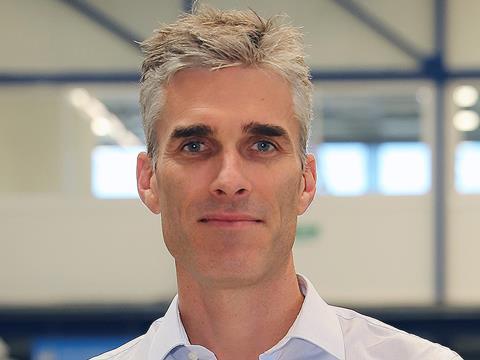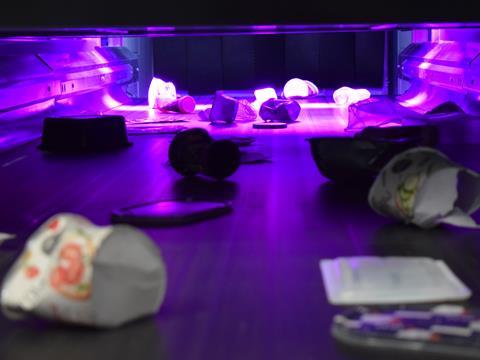
September was a busy month for the HolyGrail 2.0 project, which aims to simplify the process of sorting packaging waste through the use of digital watermarking (DW) technology. Alongside the announcement that it had reached the semi-industrial trial stage, it was also revealed that the project had received validation for a prototype detection sorting unit.
To learn more about the latter announcement, we spoke with Eric Westerhoff, director of marketing at Pellenc ST – the developer of the sorting unit.
Let’s start with some context – could you introduce Pellenc and unpack the company’s involvement with Holy Grail 2.0?
Pellenc ST develops intelligent and connected sorting solutions for the recycling industry. With two subsidiaries (based in the United States and Japan) and numerous sales offices, it has already installed 1,800 machines in over 40 countries.
To support operators in modernizing their industrial tools and meet the new standards of 4.0 sorting centres, it has developed the Mistral+ Connect and continues to innovate by developing innovative sensors, connectivity, and services to support the waste and recycling industry.
The marker project was born several years ago. As early as 2013, the PETCORE association (representing the entire PET value chain), of which Pellenc ST has always been a member, launched the idea of putting markers on packaging, via a project called Polymark.
HolyGrail 2.0 is the second stage of a new project aiming to offer a revolutionary solution for sorting packaging without chemical additives, thanks to printed or embossed markers allowing higher sorting quality and address new applications.
This association representing the complete packaging value chain selected Pellenc ST, in collaboration with the digital watermarks technology provider Digimarc, to develop the first prototype detection unit combining both NIR/ VIS detection and digital watermarks in an optical sorting solution.
With around 120 European companies and organizations involved, this initiative aims to assess whether this brand-new digital marking technology can enable better sorting and higher-quality recycling rates in the EU.
digital watermarks are well known in anti-counterfeiting applications, to protect the design of industrial products or banknotes. It hides a pattern into the printed label, and this pattern is repeated all around the object. It can also be embossed in the body of the plastic packaging. In this case, the pattern is made of small height differences on the surface. This is a very high-resolution application, with pixel sizes around 0.1 mm.
Can you describe how the detection sorting unit for digital watermarking works?
This prototype is based on a commercial Mistral+ Connect Optical sorter with an add-on module for the detection of digital watermarks. With an ejection rate of more than 95%, the Mistral+ prototype developed by Pellenc ST combining NIR VIS technology and DW for the first time has successfully passed the first phase of the project.

The prototype has now entered phase 2 of the project: installed in the main waste handling facility of the city of Copenhagen to start the semi-industrial test phase since the end of September, it is currently being tested using waste streams with Packaging marked with DW. In 2022, it will be installed in France at Recyclers and MRFs for the industrial testing phase (phase 3) of the project.
Have you encountered any challenges when integrating digital watermarking into your existing systems?
The three key components are very challenging: high-power LED lighting, many high-resolution cameras, and huge computing power compared with any of our previous technologies. We are proud to have been able to make it work in an MRF environment, and in just a few months.
Implications for integrating digital watermarking into existing sorting machines include technical requirements and investment implications.
At Pellenc ST, we are convinced that this technology will be used as an additional layer to improve sorting and address new applications like food/non-food sorting. The combination of NIR/VIS and watermarking brings several benefits like completing the unmarked portions of the object, detecting material and colour if the marked object is dirty or damaged, checking the validity of the marker in relation to the target material, and allowing negative sorting for unmarked objects and optimize object limits for a purer sorting
What have the results of these initial trials been? Has there been anything surprising or encouraging, and are there any learnings or areas of optimisation?
Mostly good surprises, with good robustness versus typical deformations or soiling of waste products. The ongoing phase will go deeper into this confirmation.
We have already spotted some obvious improvements, like the fact that products should be marked on both sides to be detected. Of course, rolling objects are a challenge too, but this is not specific to the marker technology.
Regarding the future of the project – what do you see as the next steps?
The economic feasibility will have to be proven soon, because resources in the recycling industry are not infinite.
Data management with a very rich encoding capability might be difficult, and the types of agreements/licenses between all actors of the value chain will have to be clearly agreed on.
















